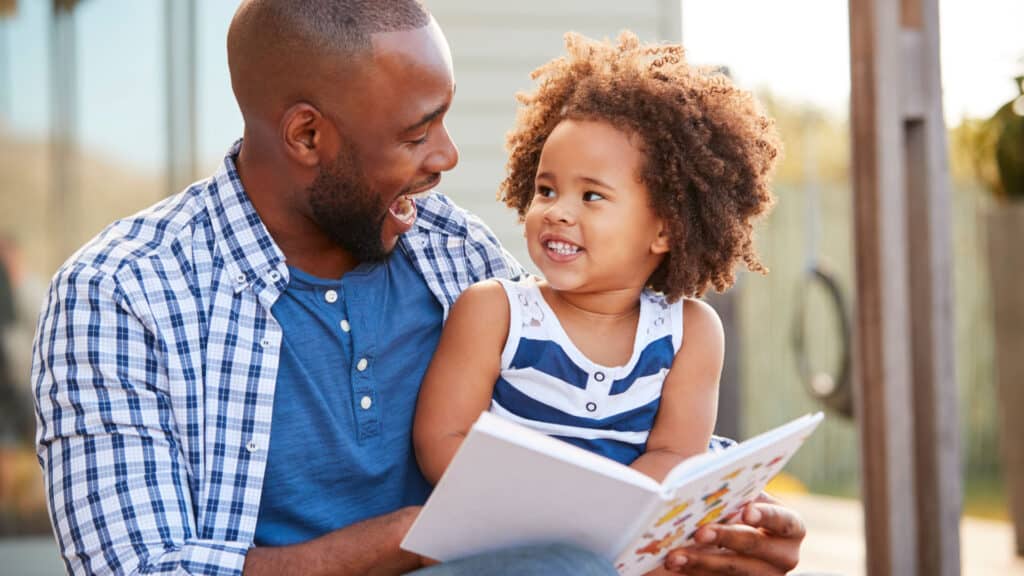These resources offer different ways to help your child with literacy skills. Browse them all or jump to the section you need.
- Best practices for teaching and learning literacy
- How do I know if my child’s literacy skills are on target?
- Resources to help your child at home
- Understanding literacy-related learning disabilities (LDs)
- Dyslexia Resources
- Louisiana Department of Education Resources
Best practices for teaching and learning literacy
Reading Interventions Video Series: This series from Reading Rockets shows how a reading expert works with kids in different grades to teach specific skills. (7 episodes, 12-18 min each) Also see Working with Struggling Readers – Every Child Can Succeed.
Target the Problem: Learn how teachers (and parents) can identify trouble spots and help students improve their skills in those areas. From Reading Rockets.
What the science says: effective reading interventions for kids with learning disabilities: This article from Great Schools shares what the research tells us about effective teaching strategies for students with learning disabilities.
What the Words Say: Many children struggle with reading – and children of color are far less likely to get the help they need This article describes how common reading struggles are, how they can affect a child’s life, and some of the teaching strategies that are critical to helping kids learn to read in the early school years.
ELA/Literacy skills by grade: Choose your child’s grade at the top, and select “ELA/Literacy” for the subject. It will describe the standard literacy skills from a common national standardized test called PARCC. It can give you a good idea of the kind of things they expect students to be able to do in different grades. From Great Schools.
15 Guided Reading Activities, Classroom Accommodations, and Teaching Strategies for Students with Dyslexia: This article from Waterford.org is meant for teachers, but can also give parents an idea of what can help their child with dyslexia.
How do I know if my child’s reading skills are on target?
ELA/Literacy skills by grade: Choose your child’s grade at the top, and select “ELA/Literacy” for the subject. It will describe the standard literacy skills from a common national standardized test called PARCC. It can give you a good idea of the kind of things they expect students to be able to do in different grades. From Great Schools.
Videos of Learning Milestones: This video clip collection from Great Schools shows what skills students should be mastering in different grades.
Learn more:
- What to Do if Your Child Struggles in School
- Grade-level expectations for literacy
- School assessments
Resources to help your child at home
Reading Practice Strategies and Activities:
Is your child struggling with reading? Here are 5 ways you can help at home. Blog from Exceptional Lives.
Activities to Improve Reading Fluency: List of practice activities from Reading Rockets.
Tools from Learning Heroes: Choose Reading for a subject and then your child’s grade. Get a list of specific reading activities.
Reading Tips: General tips from Reading Rockets to help your child learn to read, organized by grade level. Also tips for children with specific disabilities. Available in a variety of languages.
Target the Problem: Learn how to identify your child’s trouble spots and how to help them improve their skills in those areas. From Reading Rockets.
Working on specific skills: Learn what parents, teachers and kids themselves notice when they struggle with each skill, and then what each can do to improve it. From Reading Rockets.
- Word Decoding and Phonics – Know the letter sounds and sounding out words
- Phonological and Phonemic Awareness – Recognizing and using specific word sounds
- Vocabulary – Knowing words for talking, reading and writing
- Fluency – Reading smoothly, accurately and with expression
- Comprehension – Understanding what you read
English and Language Arts Apps, Games and Websites: This list of games was picked by experts and includes fun online activities for a range of ages.
Videos:
Choral and Echo Reading: (2:45) Shows 2 techniques to improve your child’s reading fluency.
Paired Reading: (2:53) Shows technique to improve reading skills and confidence. Good for those with dyslexia and others.
Reading Interventions Video Series: (7 episodes, 12-18 min each) Shows how a reading expert works with kids in different grades to teach specific skills.
Understanding literacy-related learning disabilities (LDs)
About Reading Disabilities, Learning /Disabilities, and Reading Difficulties: This short article from Reading Rockets describes reading disabilities, how they differ from reading difficulties, and what you can do to help.
The LD Checklist: Recognize and Respond: Interactive online checklist from the National Center for Learning Disabilities. Answer questions about your child to learn about the signs of different kinds of LDs and ways to help.
Learning disabilities: An overview: Short article from Great Schools about LDs, including what to look for in different grades, and how to help your child.
About Learning Disabilities: Very short article from the National Institute of Child Health and Human Development. Describes the basics of LDs and some common types.
Learning Disabilities: Lots of information from MedlinePlus about LDs, including causes, symptoms, testing, and treatments. Easy-to-read format.
Also see Dyslexia Resources, below.
Dyslexia Resources
Does my child have dyslexia? This page from Exceptional Lives shares the basics of dyslexia, including what it is, the common signs, and what to do about it. This is a page from a whole guide about What to Do if Your Child Struggles in School.
Basics of Dyslexia: Through video and other resources, learn about dyslexia and how to help kids who have it. From Reading Rockets.
Dyslexia Videos: More videos about assessing reading problems like dyslexia and what the brain research tells us. From Reading Rockets.
15 Guided Reading Activities, Classroom Accommodations, and Teaching Strategies for Students with Dyslexia: This article from Waterford.org is meant for teachers, but can also give parents an idea of what can help their child with dyslexia.
A day in the life of a child with dyslexia: This sample story from Understood shows how a child’s dyslexia can affect many aspects of their daily life.
Decoding Dyslexia, LA: Facebook page for a LA-based group for parents to get support, tips and resources from others.
Dyslexia: FAQs for Parents. Lists and answers frequently asked questions about what to do if you think your child may have dyslexia, and how the Louisiana schools should respond.
Resources for Students with Dyslexia: This includes parent FAQs, the policies from the LA Dept. of Education (LDOE) around dyslexia (see below) and Bulletin 1908: Regulations and Guidelines for Implementation of the Louisiana Law for the Education of Dyslexic Student.
A Guide to Dyslexia in Louisiana: This covers the policies in LA for identifying and teaching students with dyslexia. It is mainly written for teachers and school districts but has useful information for parents about the process and their rights.
The resources below are from Louisiana, but everything except the LEAP testing information should be helpful to anyone.
Louisiana Dept. of Education (LDOE) Resources
Louisiana’s Literacy Plan: Describes the state’s 4 “pillars” of literacy education goals, and how the LA Department of Education is supporting teachers and families to improve literacy outcomes.
Virtual Instruction Guide: Tips for Parents about virtual learning
ELA Guidebooks: These are for the teachers and link to the materials for each unit in each grade, including texts, lessons and extra materials. Some of the resources may not be accessible to parents, but overall this can help you understand what your child is doing in class.
ELA Guidebooks Parent Guides: Explain the purpose and activities of the English Language Arts units for each grade level. They include extra activities for students who are struggling, including vocabulary support, audio recordings and video supplements to learn more about the topic.
K-12 Standards for ELA: This detailed document describes the reading and writing skills that students are supposed to master in each grade level. This can help parents to understand what their children should be learning to do with written text, and how the skills should progress from Kindergarten through high school. Also see ELA/Literacy skills by grade.
Strategies for Success: A Guidebook for Supporting Students with Disabilities. Describes how the Louisiana school districts aim to identify disabilities early, provide targeted education strategies and help students and families through the transition points.
Dyslexia: FAQs for Parents. Lists and answers frequently asked questions about what to do if you think your child may have dyslexia, and how the Louisiana schools should respond.
A Guide to Dyslexia in Louisiana: This covers the policies in LA for identifying and teaching students with dyslexia. It is mainly written for teachers and school districts but has useful information for parents about the process and their rights.
Bulletin 1903: Regulations and Guidelines for Implementation of the Louisiana Law for the Education of Dyslexic Students. This describes the legal responsibilities of the school system in identifying and teaching students with dyslexia. It is a complicated document, but includes specific information that can help parents to be sure the school is complying with the process and rights of their child. It could be a good thing to print out and discuss with your child’s teacher or IEP team.
LEAP 2025 Testing:
LEAP stands for Louisiana Educational Assessment Program. These are standardized state tests that measure how well a student has learned the course content for a certain subject. There are LEAP 2025 tests for these subjects: English I, English II, Algebra 1, Geometry, US History and Biology.
Parent Guide to the LEAP 2025 Student Reports: Explains how to interpret your child’s test results and what to ask your child’s teacher.
LEAP 2025 Practice Tests: These can help you understand the literacy expectations for each grade level, and provide practice material to use with your child. Look for the paper or online practice tests for ELA (English Language Arts)
Activities to Support Reading from the Louisiana Department of Education:
At Home Literacy Activities: Brief descriptions of several activities. If you need these in another language, go to this link and scroll to the bottom.
Build A Book Activity: Create a real book with your child, with story, pictures and proofreading. Extra: “Author’s Night” event.
Career Day/Night Activity: Students research careers that they are interested in through reading, interviews and more. (Astronaut? Zookeeper? Movie Star? Anything they want!)
Table Topics: Game/activity to encourage conversation about topics of interest. Helps with vocabulary and language development.
Recipe for Reading: Children choose a recipe, shop and follow the steps to make it. Extra: host a dinner party or cooking show.



